Newstead Abbey - Part 01 - Buildings And Structures
w/e 17 September 2006
All this week's pictures were taken
with a Kodak DX6490

I've often thought about visiting Newstead Abbey
but have always put it off until now as it has been well covered
on other sites. Its connections with the poet Lord Byron (1788
- 1824) have been well documented so I'll try to include some
of the lesser know facts about the place and for the most part
let the pictures do the talking. In this the first of a two part
series, I'll concentrate on the buildings and structures and
in the second part, we'll take a look at some of the beautiful
gardens.
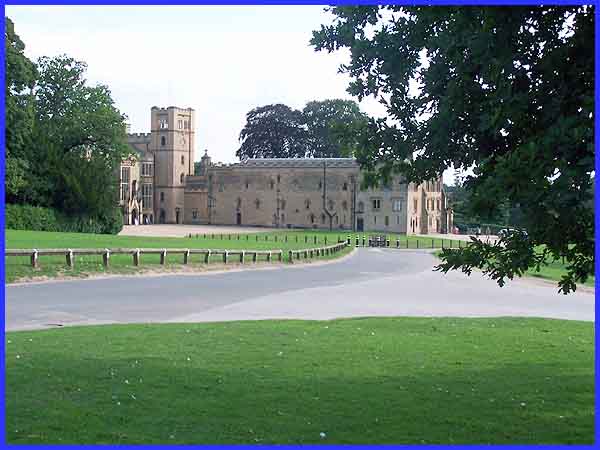
From the main gates of Newstead Abbey there is a mile long drive
to the car park and from there, it is a further 250 yards to
the house itself. This then is one of the first views of the
Abbey that greets the visitor. To the right as we approach is
the Stable Block and the Upper Lake.
|
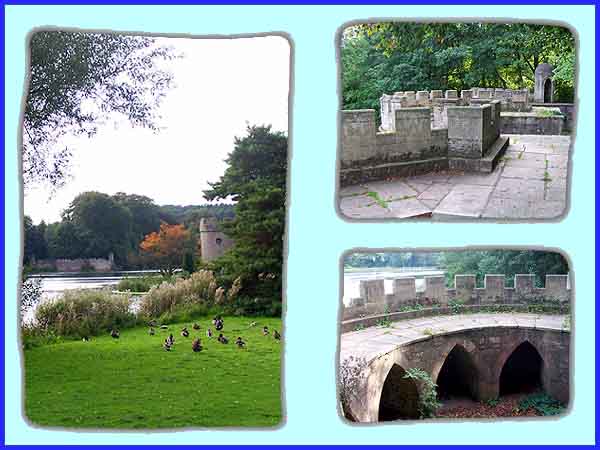
Across the water we can make out beneath the trees some fortifications
but to reach them entails a five to ten minute walk around the
lake and through the woods on the far side.
|
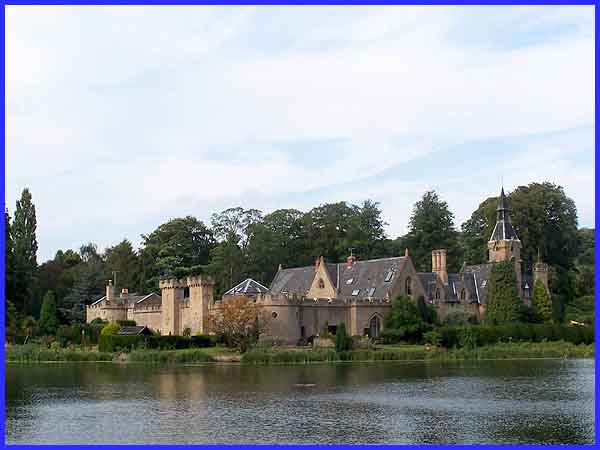
From those fortifications there are some wonderful views back
across the lake. Zooming in we see the aforementioned Stable
Block complete with bell tower and fronted by the Mock Fort.
All of this is now in private hands and not open to the public
but the forts facing each other on the Upper Lake were built
by the fifth Lord Byron so that he could fight mock naval battles
with a miniature fleet of ships each with their own crew. He
also erected Folly Castle on a hill overlooking the lake but
this has now been demolished.
|
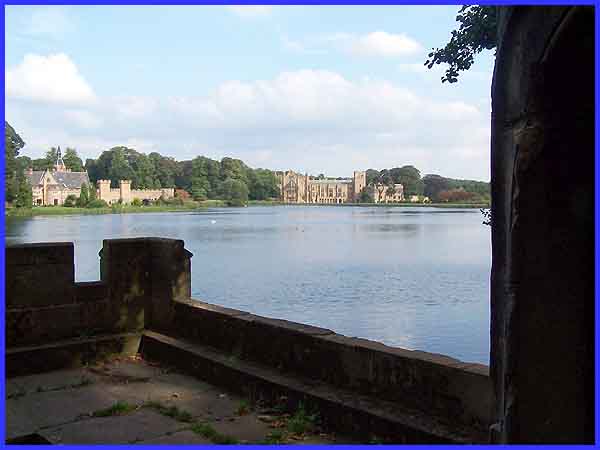
Pulling back for a wider view of Upper Lake we can see what has
become the classic view of Newstead Abbey (see also title image
at the top of this page). The Abbey was originally founded by
Henry II between 1164 and 1174 after the murder of Thomas a Becket
and was actually a priory built in memory of his grandfather.
|
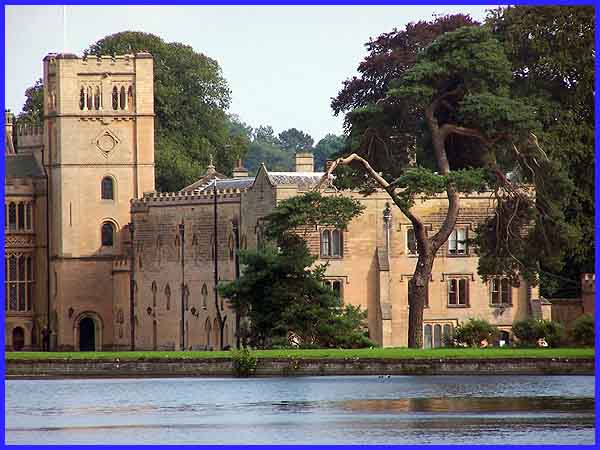
It remained a religious house for almost 400 years until it was
bought by Sir John Byron in 1540 after the Dissolution of Monasteries.
It was Sir John who created a house out of the ruins of the monastery
and it remained in the Byron family until the poet who was the
sixth Lord Byron sold it to his friend Colonel Thomas Wildman
in 1814 despite having previously said he would never sell it.
He had inherited the house at the age of ten when it was in a
considerable state of disrepair and he moved to Newstead ten
years later after obtaining his degree in 1808. Mounting debts
forced his hand however and the sale became inevitable.
|
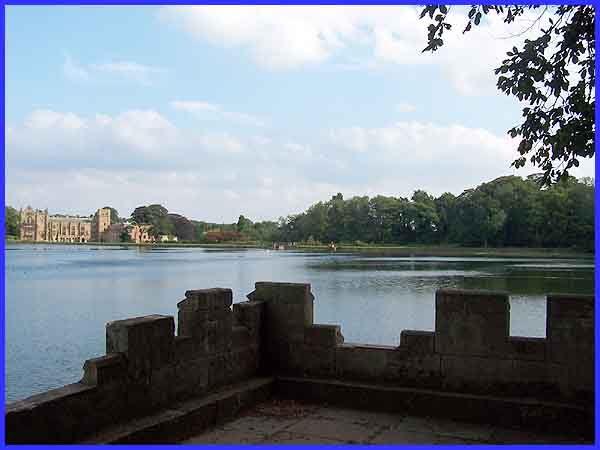
Panning a little to the right from the ramparts of the fortifications
we can now make out the lake outlet on the grassy bank near the
centre of this image.
|
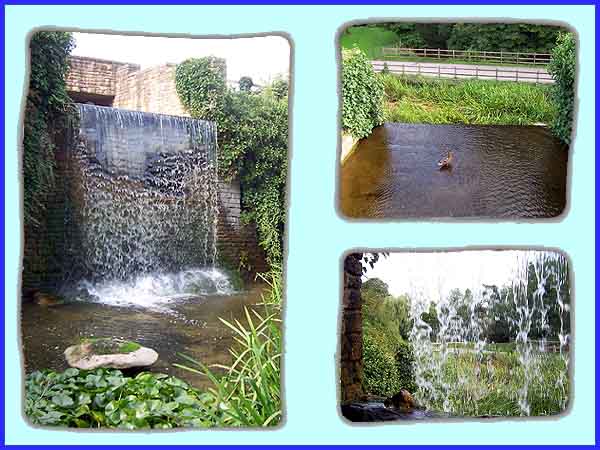
These views all show the outlet from three closer and different
positions. Top right is from the bridge in the grassy bank that
crosses the outlet. The bridge can be seen in the left picture
as the water drops down to the lower level but notice the two
black shapes through the cascading water. These are in fact 'windows'
in the wall and are reached along a dark narrow passage accessed
from the right hand side of the waterfall. The third image, bottom
right, is from the passage looking through the falling water.
|
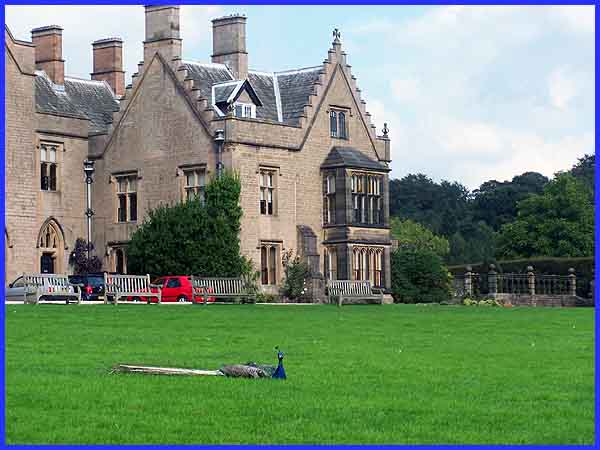
Returning now to the house, we can bring the history up to date
for in 1931 it left private hands and was given to what was then
Nottingham Corporation and is now the Nottingham City Council.
From the south front of the building where peacocks can lazily
pass their days on a large expanse of green, we are ready to
explore the gardens which we will do in the second and concluding
part of this mini-series.
Forward to Part 02
I wrote in the introduction to the Monk's Way, 'Other web sites already cover
Newstead in some detail' so if this has whetted your appetite
you can learn more at Time Travel-Britain.
|









